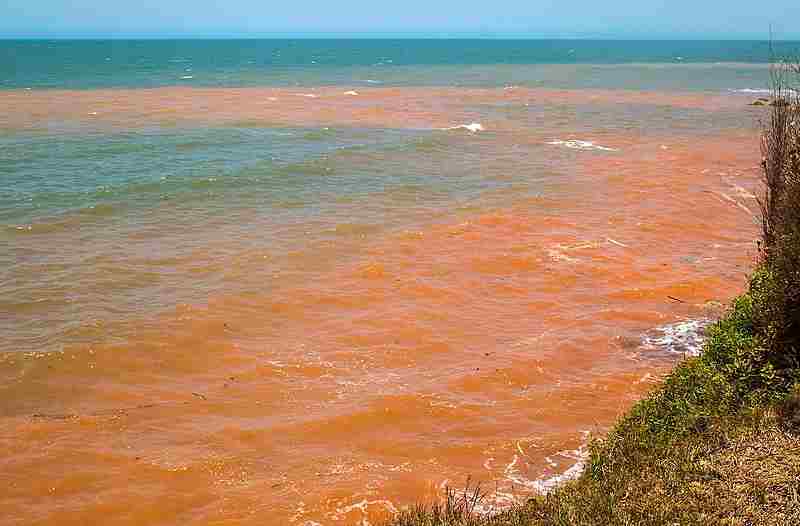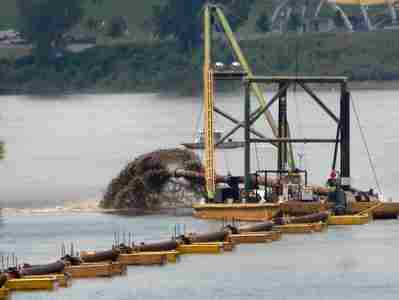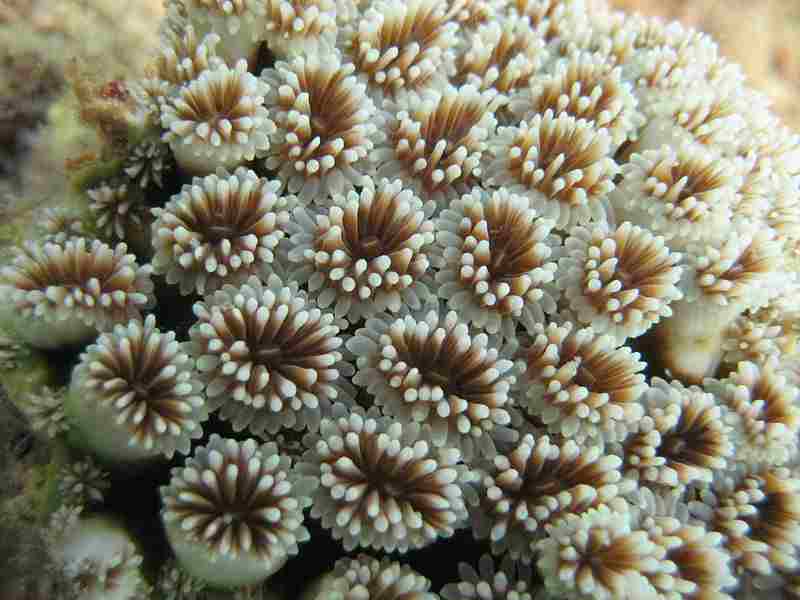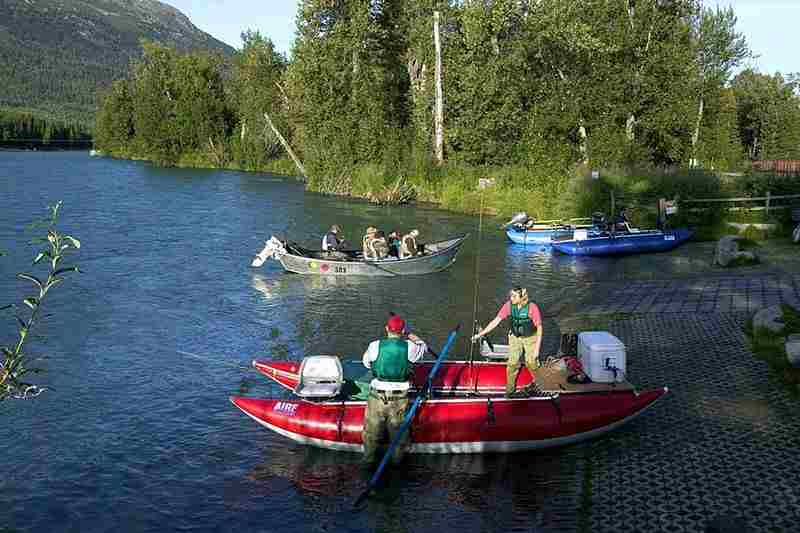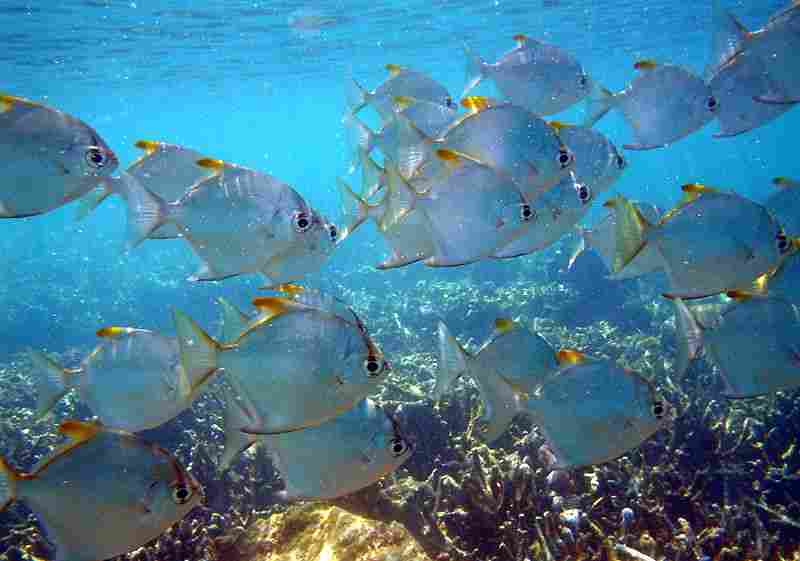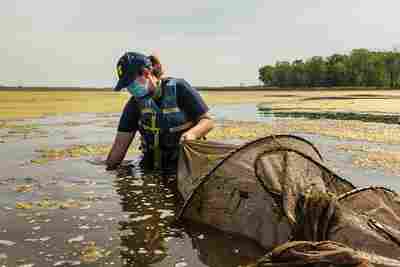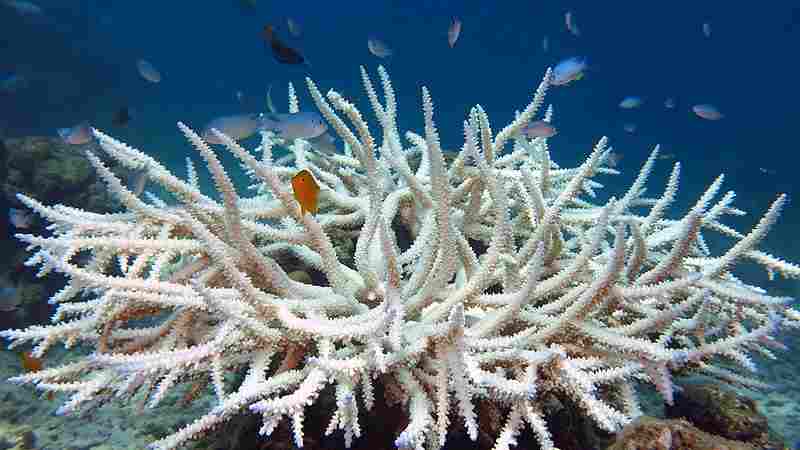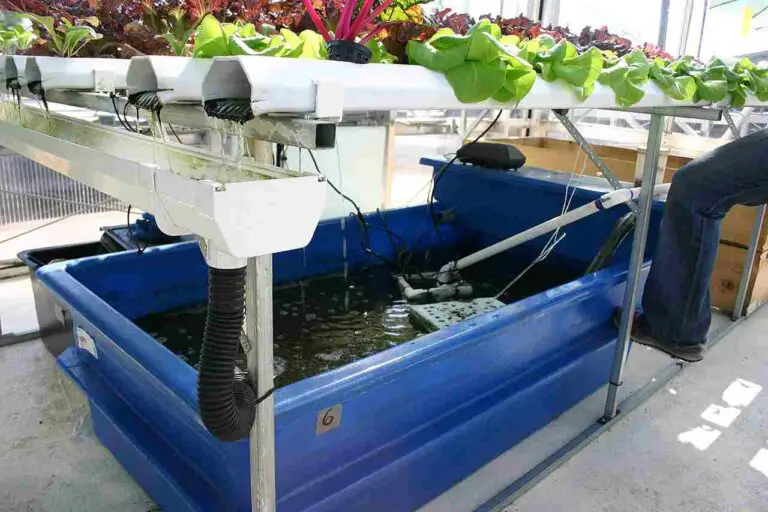7 Threats to Estuaries and Their Influence Discussed
Threats to estuaries are; excessive nutrient influx, sedimentation, urban land conversion, industrial pollution, climate change-induced drought, and rising sea levels.
This article discusses the threats to estuaries and their influence on both immediate and surrounding areas; as follows;
1). Excessive Nutrient Influx: One of the Threats to Estuaries
Excessive nutrient influx is a major threat to estuaries, with notable consequences for both the immediate estuarine ecosystems and the surrounding areas.
Estuaries; which are areas where freshwater bodies like rivers meet marine ecosystems like the sea, are highly productive and sensitive coastal terrains. However, when excessive nutrients, often in the form of phosphorus and nitrogen, enter estuaries, it disrupts the natural equilibrium of these ecosystems. This section explores the influence of excessive nutrient influx on estuarine ecosystems and their surrounding areas.
Influence of Excessive Nutrient Influx on Estuarine Ecosystems
The influence of excessive nutrient influx on estuarine ecosystems can occur in various forms, such as; eutrophication, oxygen depletion, altered species composition, toxic algal blooms, and ecological impacts on shellfish.
Excessive nutrient influx can lead to eutrophication, a condition which is characterized by an overabundance of nutrients that stimulates excessive algal growth. This overgrowth of algae, also known as algal blooms, can shade, smother and outcompete native aquatic plants, such as seagrasses and macroalgae, which are essential for the estuarine food web.
As the algae die and undergo biodegradation, oxygen is consumed in the process. This can lead to hypoxic or anoxic conditions, where there is a severe lack of oxygen in estuarine waters. Oxygen-deprived zones are detrimental to fish, invertebrates, and other aquatic animals that depend on oxygen for survival.
Excessive nutrients can favor the growth of opportunistic species, such as certain harmful algal species and non-native aquatic plants. These changes in species richness and composition can disrupt the equilibrium of the estuarine ecosystem and potentially lead to the displacement of vital native species.
Some algal blooms, such as red tides, can produce toxins that are harmful to both marine organisms and human health. Excessive nutrient influx can fuel the growth of these toxic algae, thereby posing risks to fisheries as well as public health.
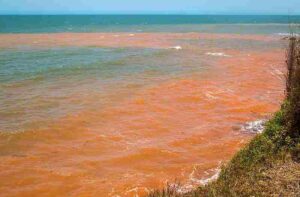
Nutrient influx can lead to alterations in water chemistry and the availability of essential minerals, thereby affecting various shellfish, including oysters and clams. Reduced water quality and changes in the availability of planktonic food sources can harm shellfish populations and aquaculture.
Influence of Excessive Nutrients on Surrounding Areas of Estuaries
The influence of excessive nutrient on areas surrounding estuaries may occur in similar patterns as they occur within the main estuary zone. They include; water quality issues, economic impacts, harmful algal blooms, increased stormwater runoff, and altered coastal landscapes.
Excessive nutrient influx contributes to poor water quality in estuaries, which can extend to surrounding coastal areas. This can have a negative environmental impact, and may also hinder tourism, recreational activities, and property values within coastal communities.
Nutrient-induced water quality issues can harm fisheries, aquaculture, and tourism industries in the surrounding areas of estuaries. It can lead to reduced fishery yields and diverse negative economic consequences for communities that are dependent on estuarine resources.
Harmful algal blooms associated with excessive nutrients can contaminate shellfish and fish, thereby posing risks to public health. Closures of fisheries and warnings against consuming contaminated seafood (as a result of such contamination) can affect local economies.
Urban and agricultural nutrient runoff represent a common source of excessive nutrients in estuaries. This runoff can also contribute to severe flooding and water pollution in surrounding areas, exacerbating the effects of nutrient influx scenarios.
Nutrient-induced erosion and habitat degradation in estuarine zones can result in altered coastal landscapes. This can increase the vulnerability of surrounding areas to coastal erosion as well as flooding during storm events.
2). Invasive Species
Invasive species represent a notable threat to estuaries, as they can alter the balance of these sensitive ecosystems. Estuaries can be described as highly productive and biodiverse environments. When non-native species establish themselves in these estuaries, however, they can compete intensely against native organisms, alter the aquatic food web; and cause major ecological imbalances.
The influence of invasive species on estuarine ecosystems and the surrounding areas, is discussed in the following subsections;
Influence of Invasive Species on Estuarine Ecosystems
There are various mechanisms through which invasive species influence estuarine ecosystems, including; competition with native species, habitat alteration, altered trophic relationships, disease introduction, and hybridization.
Invasive species often have a competitive advantage over native species within estuarine ecosystems. They may exploit available resources more efficiently, leading to a decline in the biological success of native populations. This kind of unfavorable competition can reduce the biodiversity of estuaries.
Some invasive species can modify estuarine habitats by changing the physicochemical dynamic of the environment. For example, invasive marsh plants can displace native species and alter the structure and function of marsh-dominated estuarine zones.
Invasive species can disrupt the trend of estuarine food chains by altering the abundance, adaptation, and distribution of prey and predators. This can result in changes in the composition and abundance of all estuarine species, potentially also affecting commercial and recreational fisheries.
Diseases can be introduced by invasive species to native populations that have no natural immunity. For instance, invasive pathogens within estuaries can harm shellfish populations, which are critical for the sustainability of many estuarine ecosystems and human industries.
In some cases, invasive species can hybridize with native species, leading to the loss of genetic integrity within native populations. This can further threaten the survival of the native species in estuaries.
Influence of Invasive Species on Surrounding Areas of Estuaries
Areas surrounding estuaries may experience various effects as a result of invasive species, including; economic impact, water quality issues, habitat destruction, impact on indigenous communities, public health risks; and increased management costs.
Invasive species can negatively impact the economy of surrounding areas. For example, invasive aquatic plants can obstruct waterways, making navigation difficult and expensive. Invasive pests can also damage crops and affect agricultural industries near estuaries.
Some invasive species can contribute to water quality challenges by affecting the natural water filtration and nutrient recycling processes in estuaries. Water quality problems can extend to surrounding coastal areas, where they impact tourism, property value, and recreational activities.
Invasive species can alter or destroy critical estuarine habitats. For example, invasive marsh grasses can outcompete native vegetation, leading to the loss of essential breeding, feeding, and sheltering grounds for estuarine species.
Indigenous communities which rely on estuarine resources for their livelihoods, can be significantly affected by invasive species. Reduced fish and shellfish populations can impact traditional harvesting practices and economic well-being.
Some invasive species in estuarine regions can pose public health risks. For example, invasive pathogens or bacteria can contaminate recreational waters and shellfish, leading to health advisories and restrictions on human activities within and around estuaries.
Controlling and managing invasive species in estuaries often requires significant amount of resources and can lead to increased costs for local governments and communities. These costs may include monitoring, research, and control measures to mitigate the impact of such invasive species.
3). Sedimentation: One of the Threats to Estuaries
Sedimentation is a major threat to estuaries, and has far-reaching implications for both the estuarine ecosystem and its surrounding zones.
Estuaries can be described as dynamic environments which are characterized by their complex interactions with sediments and water. When excessive sediments enter estuaries, it can alter the natural equilibrium and functionality of these coastal environments. This section explores the influence of sedimentation on estuarine ecosystems and their surrounding areas.
Influence of Sedimentation on Estuarine Ecosystems
Sedimentation in estuaries may cause habitat smothering, impacts on filter-feeding organisms, water turbidity, altered benthic communities, and nutrient storage.
Excessive sedimentation can lead to the smothering of critical estuarine habitats such as mudflats; seagrass beds and salt marshes. These habitats serve as viable breeding grounds and foraging areas for numerous estuarine species. Smothering can result in extensive environmental degradation and habitat loss.

Also, sedimentation can impact filter-feeding organisms such as bivalves (clams, oysters) and suspension-feeding species (sponges, corals). The excess sedimentary particles can clog their feeding structures, thereby reducing their ability to obtain food and grow.
High sediment levels in estuarine waters lead to increased turbidity and reduce water clarity. Reduced visibility can inhibit visual predators like fish and birds, and limit the ability of submerged aquatic vegetation to photosynthesize.
Sedimentation can alter the composition of benthic communities on the estuarine floor. Changes in sediment type and abundance can affect the organisms that dwell in these areas as well as the overall aquatic food chain structure.
Sediments can function as reservoirs for nutrients like phosphorus and nitrogen. Excessive sedimentation can release stored nutrients into the water, thereby contributing to nutrient loading in estuaries and fostering water quality issues.
Influence of Sedimentation on Surrounding Areas Around Estuaries
Areas that surround estuaries are affected by sedimentation in diverse ways; which include economic impacts, navigation challenges, increased flooding risk; loss of ecosystem services, and water quality problems.
Sedimentation can negatively impact the economy of surrounding areas. For instance, reduced water clarity can harm tourism and recreational activities such as boating, fishing, and swimming, thereby affecting the local tourism industry.
High sediment levels can obstruct waterways, thereby making navigation challenging and potentially leading to increased dredging costs in order to maintain navigable channels.
Sedimentation can lead to the elevation of estuarine bottoms, which reduces the capacity of these estuaries to absorb and dissipate floodwaters and storm surges. This can increase the risk of flooding in surrounding coastal areas, thereby impacting both human communities and the natural estuarine environment.
Estuaries provide valuable ecosystem services such as water purification, flood regulation, and support for fisheries. Sedimentation can reduce the ability of estuaries to provide these ecological services, impacting both local communities and the environment.
Sediments can carry pollutants, including heavy metals and anthropogenic contaminants from agricultural and urban areas, into estuaries. This transport can result in water quality issues that extend to surrounding coastal areas, affecting public health and water-based activities.
4). Urban Land Conversion
Urban land conversion is one of the most prominent, modern threats to estuaries, with profound consequences for both the main estuarine ecosystem and the surrounding areas.
Estuaries are characterized by their complex and dynamic, coastal interactions between land and water. Urbanization and other forms of areal development in estuarine regions often leads to land conversion and the expansion of human settlements, which can in turn disrupt the natural stability of these delicate biomes.
The influence of urban land conversion on estuarine ecosystems and the surrounding areas is discussed as follows.
Influence of Urban Land Conversion on Estuarine Ecosystems
The influence of urban land conversion on estuarine ecosystems can be observed and evaluated in forms such as; habitat loss, alteration of regional hydrology, water pollution, introduction of invasive species, and altered salinity levels.
Urban land conversion often involves the clearing of natural estuarine habitats, including marshes, mudflats, and vegetated wetlands. These habitats naturally serve as breeding, feeding, and sheltering sites for multiple estuarine species. Habitat loss can lead to a decline in biodiversity and the displacement of native organisms.
The construction of impervious structures, such as roads, water dams, buildings, and parking lots, can alter the natural hydrology of estuaries. It can lead to changes in water flow patterns, sediment dynamics, and tidal energy influences, thereby affecting the equilibrium of the ecosystem.
Urbanization can contribute to increased stormwater runoff, transporting pollutants, including chemicals, heavy metals, hydrocarbons, and various nutrients, into estuaries. This influx of contaminants can degrade water quality, harm aquatic life, and disrupt the estuarine energy pyramid/food web.
Also, urban development can introduce non-native species to estuaries, which can outcompete and displace the native species, leading to widespread changes in species composition and ecosystem structure.
Lastly, urbanization can result in changes in freshwater flow patterns, which can influence salinity levels in estuaries. This can have detrimental effects on estuarine organisms that are adapted to specific ranges of salinity.
Influence of Urban Land Conversion on Surrounding Areas of Estuaries
Ways in which urban land conversion affects areas surrounding estuaries include; water quality issues, economic impact, flooding risk, erosion and habitat degradation, infrastructure costs, and loss of ecosystem services.
Urban land conversion often leads to poor water quality in estuaries, which can extend to the surrounding coastal areas. This can negatively influence all forms of socioeconomic development within coastal communities.
The impacts of urban land conversion on estuaries can involve measurable economic repercussions. Reduced water quality, habitat loss, and changes in the availability of resources can all harm fisheries, tourism, and the general value of property in surrounding areas.
Urbanization in estuarine areas can increase the risk of severe flooding during extreme weather events. The construction of impervious surfaces reduces the natural capacity of estuarine regions to absorb and dissipate floodwaters, thereby increasing the vulnerability of coastal communities to such hydrological hazards.
Clearing of estuarine habitats for urban development can result in extensive shoreline erosion and habitat degradation. These effects can in turn increase the susceptibility of surrounding areas to coastal erosion and flooding.
Urbanization can require high investments in infrastructure to manage the impacts of development. This includes costs associated with stormwater management, flood control, and habitat restoration.
Lastly, estuaries provide essential ecosystem services, such as flood control, erosion mitigation, fishery sustenance, and water purification. Urban land conversion can reduce the performance of estuaries with respect to providing these services, thereby impacting both local and region communities.
5). Industrial Pollution: One of the Threats to Estuaries
Industrial pollution is another significant threat to estuaries, which may have notable consequences for both the immediate estuarine habitat and the surrounding areas.
Among coastal zones, estuaries are particularly susceptible to pollution from industrial activities and sources. Industrial processes release a variety of pollutants, including manmade chemicals, heavy metals, and organic contaminants, into estuarine waters, thereby leading to severe ecological and environmental issues.
This section explores the influence of industrial pollution on estuarine ecosystems and surrounding areas.
Influence of Industrial Pollution on Estuarine Ecosystems
The influence of industrial pollution on estuarine ecosystems may occur in various forms, such as water contamination, toxicity and health risks, habitat degradation, altered species composition, and eutrophication.
Industrial activities often release a wide range of pollutants into estuaries, such as chemicals, heavy metals (mercury, cadmium, lead), diesel and grease, as well as other harmful substances. These pollutants contaminate estuarine waters and sediments, and pose a direct threat to aquatic life.

Many industrial pollutants are toxic to aquatic organisms. Exposure to these contaminants can therefore harm fish, and invertebrate species. These pollutants can also accumulate in the food chain, where they may affect human health if contaminated seafood is consumed.
Industrial pollution can degrade critical estuarine habitats, such as salt marshes and mudflats. These habitats, as stated earlier, serve as breeding and foraging grounds for numerous species, and are essential for maintaining estuarine biodiversity.
The presence of industrial pollutants can alter the composition of estuarine species. Some species may be more tolerant to pollution, while others may suffer severe population declines or disappear altogether, disrupting the equilibrium of resources in the estuarine ecosystem.
Lastly, nutrient-rich industrial discharges can cause eutrophication, thereby promoting excessive algal growth in estuaries. This can result in algal blooms, which may consume all available oxygen as they decompose, causing hypoxic or anoxic conditions that are detrimental to aquatic life.
Influence of Industrial Pollution on Surrounding Areas
Ways in which industrial pollution may influence the environs of estuaries include; water quality decline, economic repercussions, health risks, environmental remediation costs, and loss of ecosystem services.
Industrial pollution in estuaries can lead to water quality issues that extend to surrounding coastal areas. These issues can impact the value of activities like tourism and recreation, in coastal communities.
The impacts of industrial pollution on estuaries can also be felt within an economic context. Reduced water quality and habitat degradation can reduce the value of fisheries, tourism, and agricultural projects in surrounding areas.
Industrial pollutants can contaminate seafood harvested from estuaries, posing risks to public health if consumed. This can lead to mandatory restrictive measures on fishing and seafood consumption.
Addressing industrial pollution requires environmental cleanup and restoration efforts. The cost of such measures can be substantial, impacting the allocation of local resources.
Lastly, Industrial pollution can reduce the capacity of estuaries to provide ecosystem services like water purification, thereby affecting surrounding communities.
6). Climate Change-Induced Drought
Climate change-induced drought is an emerging and increasingly severe problem for estuaries, with significant consequences on various scales.
Estuaries are highly sensitive to changes in freshwater flow patterns, and drought events can disrupt their hydrological balance. Climate change-induced drought exacerbates these challenges by altering precipitation patterns and increasing the frequency, duration, and intensity of dry spells. The influence of climate change-induced drought on estuarine ecosystems and the surrounding areas, is explored here.
Influence of Climate Change-Induced Drought on Estuarine Ecosystems
Climate change-induced drought leads to reduced freshwater inflow, altered water quality, habitat degradation, and impacts on migratory species, in estuaries.
Drought conditions often result in reduced freshwater inflow from rivers into estuaries. This reduction in freshwater can alter the salinity levels in estuaries, affecting the distribution and health of estuarine organisms that rely on specific (tolerable) salinity ranges.
Reduced freshwater flow can lead to increased concentrations of pollutants and contaminants in estuarine waters. This can harm aquatic life and lead to water quality challenges, including excessively high salinity and nutrient imbalances.
Drought can result in habitat degradation within estuaries, especially in critical sites such as salt marshes, and seagrass beds. These habitats may experience reduced productivity, and may even die-off due to altered water levels and salinity.
Also, drought conditions can impact migratory species, such as fish and water birds, that rely on estuaries as breeding or foraging grounds. Reduced water levels can limit access to these areas for such organisms, affecting their life cycle processes.
Influence of Drought on Surrounding Areas Around Estuaries
Areas surrounding estuaries can be affected by drought, and this can be assessed in terns of economic impact, water scarcity, increased risk of wildfires, displacement of species, human health and water resources decline, infrastructural and agricultural stresses.
Climate change-induced drought can harm the economy of areas around estuaries. Reduced freshwater inflow can affect fisheries and aquaculture, reducing fishery yields and impacting livelihoods.
Drought conditions can lead to water scarcity in estuarine environs. Competition for limited freshwater resources can exacerbate conflicts over water use, especially in regions with growing human populations and agricultural activity.
Often, drought conditions increase the risk of wildfires in surrounding areas, posing threats to both ecosystems and human communities. Wildfires can release pollutants into estuaries, thereby harming water quality.
Climate change-induced drought can lead to shifts in the distribution of estuarine species. Some species may move further upstream or downstream in search of suitable conditions, potentially impacting the estuarine food web.
Reduced freshwater flow in estuaries can lead to increased salinity in surrounding water sources. This can affect the quality of drinking water supplies and impact public health.
Lastly, drought can stress infrastructure and agriculture in surrounding areas. Reduced water availability can affect the supply of water for irrigation, industrial processes, and domestic use.
7). Rising Sea Levels: One of the Threats to Estuaries
Rising sea levels, driven by climate change and global warming, pose a significant and escalating threat to estuaries, and has profound implications for the estuarine habitat itself, as well as the surrounding areas.
Estuaries, which link freshwater rivers to the sea, are among the most vulnerable coastal environments to sea level rise.
The encroachment of rising seas can disrupt the delicate balance and ecological integrity of these unique ecosystems. This section explores the influence of rising sea levels on estuarine ecosystems and surrounding areas.
Influence of Rising Sea Levels on Estuarine Ecosystems
The influence of rising sea levels on estuaries can be measured and observed in diverse forms that include; saltwater intrusion, habitat submergence, altered water dynamics; and displacement of species.
Rising sea levels lead to saltwater intrusion into estuaries. As seawater penetrates further inland, it can alter the natural salinity gradient of estuaries. This change can affect the distribution and vitality of estuarine species, especially those that are adapted to specific ranges of salinity.
Many critical estuarine habitats are at risk of complete submergence as sea levels rise. These habitats are instrumental as breeding, foraging, and sheltering grounds for multiple estuarine species, and their loss can lead to declines in biodiversity.
Rising sea levels can change the circulation trend, and hydrodynamics within estuaries. This can influence sediment transport, nutrient cycling, and regional water quality, which, in turn, affects the equilibrium and stability of the estuarine ecosystem.
Some estuarine species may be forced to migrate further upstream or downstream in response to rapidly rising sea levels. This displacement can disrupt the distribution of species within estuaries, potentially leading to changes in the food web structure, and the trend of species interactions.
Influence of Rising Sea Levels on Surrounding Areas
As a result of rising sea levels, areas surrounding estuaries may be subjected to coastal erosion, high flooding risk, infrastructure vulnerability, economic decline, changes in water resource availability, and ecosystem services.
Rising sea levels exacerbate coastal erosion in surrounding areas. Shorelines recede as estuarine waters encroach on land, often leading to the loss of property and infrastructure.
Estuaries experiencing sea level rise are at an increased risk of flooding during intense storms and high-tide events. The intrusion of seawater into low-lying coastal areas can result in more frequent and severe flooding, which may affect both human communities and the estuarine environment.

Infrastructure located in estuarine and coastal regions, such as roads, buildings, and other urban or industrial utilities, can be vulnerable to sea level rise. These structures may require costly adaptations or relocation to mitigate the impacts and risks posed by rising seas.
Rising sea levels can harm the economy of surrounding areas. Coastal property values may decline, and insurance costs can also rise due to increased flood risk. Fisheries and aquaculture may be affected as water quality and habitat conditions change.
Sea level rise can cause saltwater intrusion into groundwater, thereby affecting the quality of drinking water supplies. This can impact human health and the availability of usable freshwater resources.
Lastly, rising sea levels can reduce the ability of estuaries to provide ecosystem services, which may in turn have regional consequences.
Conclusion
Threats to estuaries are;
1. Excessive Nutrient Influx
2. Invasive Species
3. Sedimentation
4. Urban Land Conversion
5. Industrial Pollution
6. Climate Change-Induced Drought
7. Rising Sea Levels
